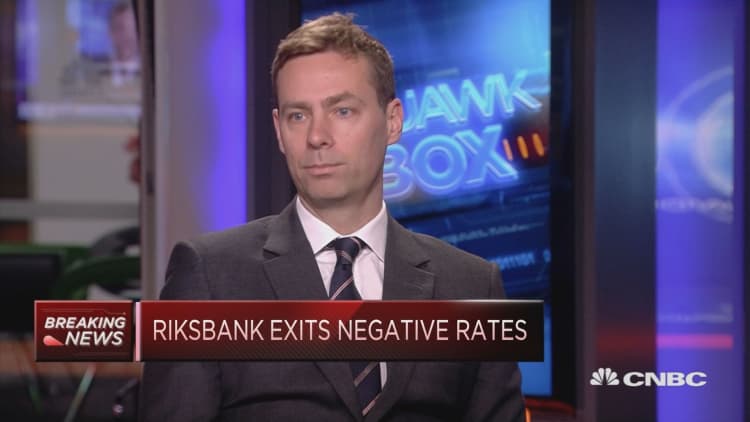Sweden's central bank hiked its benchmark repo rate by a quarter point to zero as expected on Thursday, defying a slowdown in the economy and global uncertainty to draw a line under five years with negative interest rates.
The hike from -0.25% means the Riksbank becomes the first central bank to inch its way back up to what was long considered the floor for interest rates.
Rates are still negative in the euro zone, Japan, Denmark, Switzerland and Hungary.
"The Riksbank assesses that conditions are good for inflation to remain close to the target going forward," the central bank said in a statement.
"Therefore, in line with the assessment in October, the Executive Board has decided to raise the repo rate from -0.25 percent to zero percent."
The central bank as before said it expected the repo rate would remain unchanged through 2021.
All but one analyst in a Reuters poll forecast a hike.
The Swedish crown was slightly stronger against the euro after the decision.

The world's oldest central bank cut rates to -0.10% in 2015, worried that the euro zone crisis would hit already weak prices and lead to a Japanese-style deflationary spiral.
It was forced to go further, with rates dipping as low as -0.50% in 2016 before ultra-loose policy gained traction, weakening the crown, pushing up import prices and boosting the export-reliant economy.
Few would argue that policy has been too tight. But many question the timing of the hike — only the second since mid-2011 — as the economy is slowing.
However, the Riksbank is worried that negative rates are damaging the economy in other ways, boosting asset prices and debt and increasing the risk for a financial crisis.

